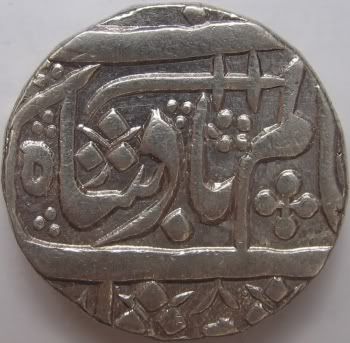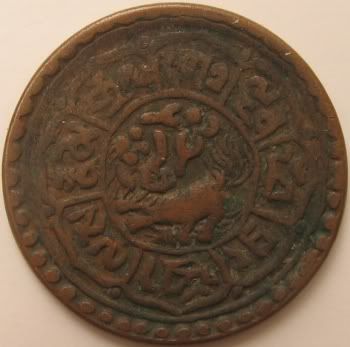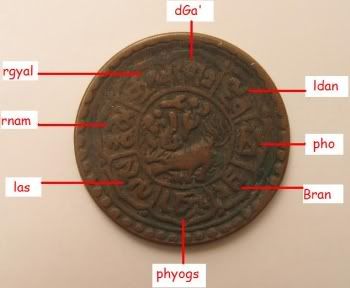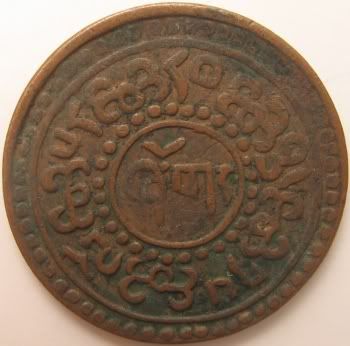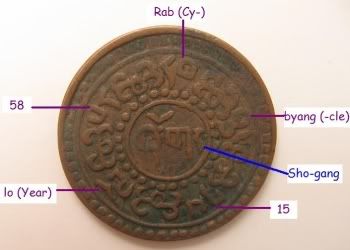Info at http://en.wikipedia.org/wiki/Tibet
http://en.wikipedia.org/wiki/Tibetan_tangka
Mass=4.1 g
Obverse: Center: Stylized Lotus; Around:
brka-shis rtags-brgyad (the eight auspecious symbols in eight radiating petals; see note below).
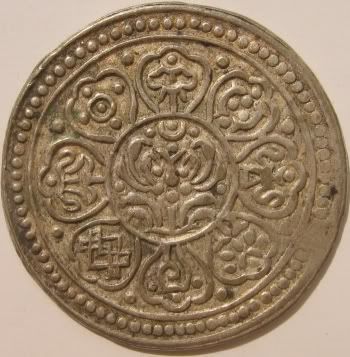 Reverse
Reverse: Center: Eight-petalled wheel (flower) within a star; Around: Tibetan inscription (broken into eight oval frames; starting from top, moving clockwise)
dga'-ldan pho-bran-phyod-las-rnam-rgyal (The Palace of Ga-den is victorious in all directions) (Note: The Ga-Den Palace was the former residence of the Dalai Lamas, located in Drepung Monastery near Lhasa.)
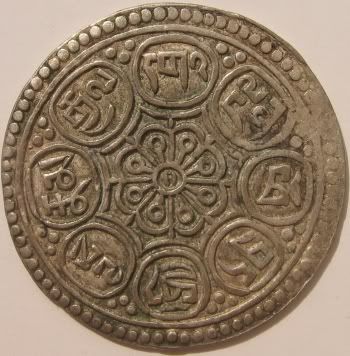 The eight auspecious symbols
The eight auspecious symbolsThe eight symbols depicted on the coin are:
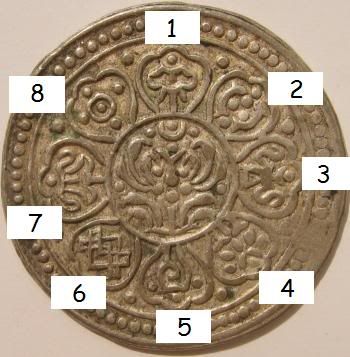
1. White Parasol/Umbrella of sovereignty
2. Two golden fish of good fortune
3. Treasure vase/Amphora of ambrosia
4. Lotus
5. Right-spiraling White conch shell
6. Endless knot/Emblem of endless birth
7. Banner of victory
8. Golden Wheel/Wheel of Dharma
For details of their significance, see
The Handbook of Tibetan Buddhist symbols By Robert Beer
